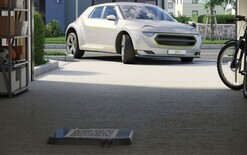Emissions goals ‘too radical’

The Imported Motor Vehicle Industry Association (VIA) has praised the Climate Change Commission for taking on board industry concerns about plans to cut transport emissions but it still fears the pace of change being proposed is “too radical”.
David Vinsen, VIA’s chief executive, says a recommendation by the commission to shift the target for the average emissions level of imported vehicles back three years is a welcome change from its draft advice earlier in the year.
He also praises the suggestion that once the emissions efficiency of vehicles entering the fleet has been addressed, the government should consider actions to tackle what is being produced by cars already on our roads.
The commission says this will be important because of the “slow turnover of vehicles in Aotearoa”.
VIA supports the revised recommendations and Vinsen, pictured, says it shows consultation was effective and the commission listened to the automotive industry’s views.
“We’re very pleased that after the release of the draft report in January that the Climate Change Commission has taken into account the recommendations we have made, particularly on two main issues,” he explains.
“One is moving out the target date for vehicles to have an average emissions intensity of no more than 105g of CO2 per kilometre from 2025 to 2028.
“Changing the emissions target for imported vehicles is more realistic and softens the gradient of the changes that need to be made. It’s not just buying us time but buying us access into a larger range of better vehicles as they come on stream.
“Secondly, the commission has taken into account our comments about the existing fleet. It recognises that once vehicles coming into the fleet have been dealt with then the government will need to look at the existing fleet.”
A recognition of the limited supply of electric vehicles (EVs) has also seen the commission reduce the number of such cars it expects to be on the road in its initial emissions budget period.
“We are also pleased the Climate Change Commission appears to have understood the supply constraints around importing electric vehicles [EVs],” notes Vinsen.
“The fact remains there are a limited number of EVs that have been manufactured and are available for us to import.”
Details of the commission’s final advice to government have been revealed in its report, Inaia tonu nei: A Low Emissions Future for Aotearoa, which was publicly released on June 9. It sets out emissions budgets up until 2035 as politicians strive for the country to hit a net zero emissions target by 2050.
The government now has until the end of 2021 to consider the advice and finalise an emissions reduction plan outlining the policies it will use to meet those goals.
Vinsen says if the commission’s proposals for the transport sector are adopted it will pose challenges for dealers and other companies across the used-vehicle supply chain.
“The targets that have been suggested in the so-called budgets are going to require too radical a change on too steep a gradient,” he warns.
“It will effect change across the industry by affecting the number of vehicles imported and people will have to change their business models.
“The disappointing thing is that dealing with the existing fleet, which is where the problem is, will not be addressed earlier. They’re relying more on changing the supply of vehicles to affect change in the fleet and that will take a very long time.
“It would have been far better, as we have suggested many times, had the commission focused more on the existing fleet from the outset and worked out how to improve the existing fleet, thereby encouraging the uptake of more environmentally friendly and safer vehicles.”





